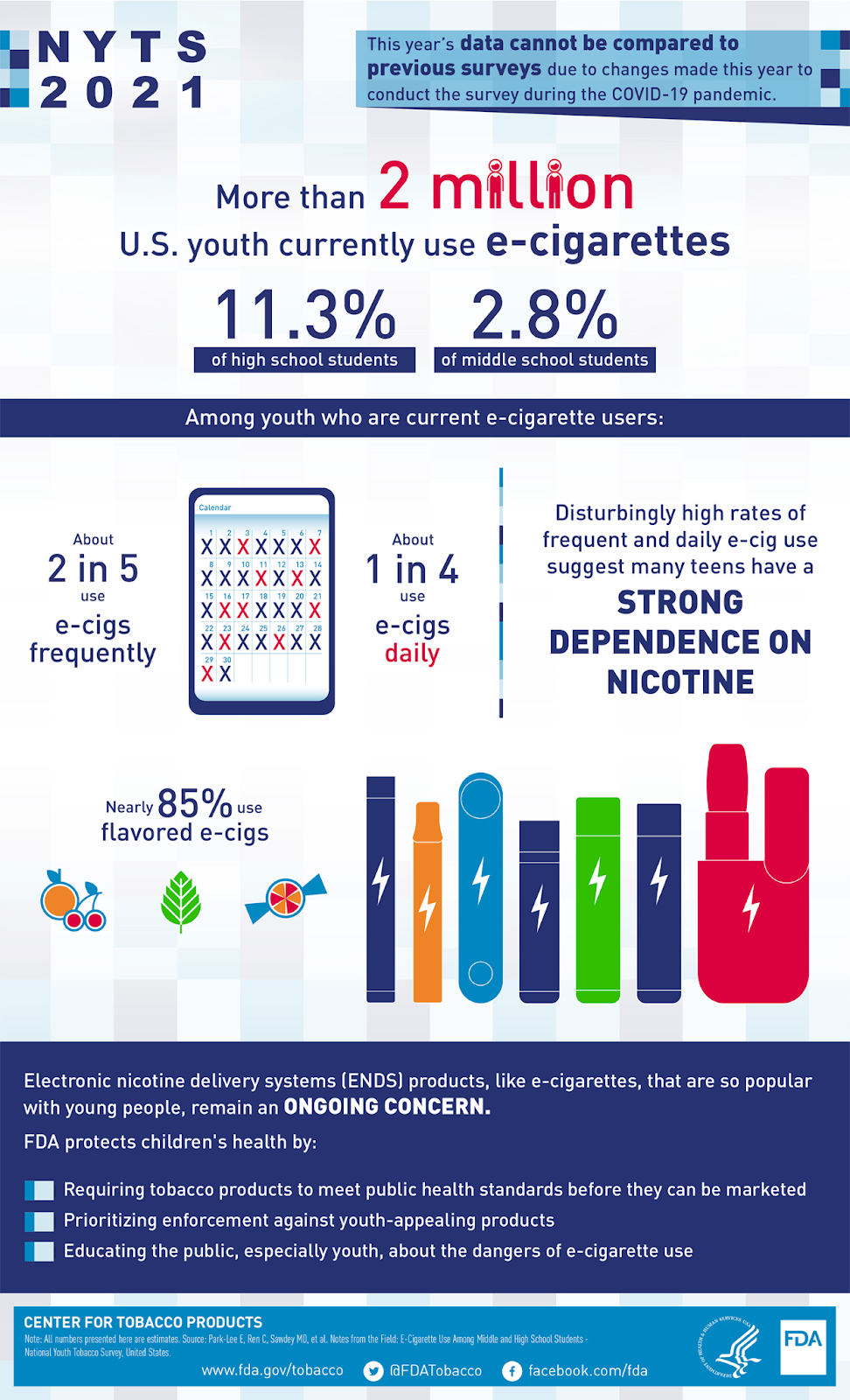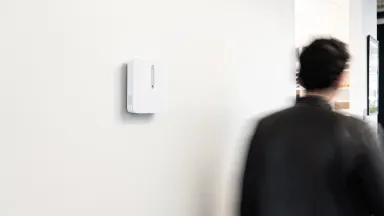Leveraging Tobacco Grants to Deter Student Vaping with Environmental Sensors
With so much focus on the COVID-19 pandemic over the past two years, it’s been easy to forget about another epidemic here in the United States: youth vaping. Unfortunately, the 2021 National Youth Tobacco Survey from the CDC reveals some disturbing trends:
More than two million middle and high school students use e-cigarettes
2 in 5 youth use e-cigarettes frequently
1 in 5 youth use e-cigarettes daily
43% of students who use e-cigs do so “to get a high or buzz from nicotine”
Of youth e-cigarette users, 85% percent use flavoured e-cigs, which leads us to another worrying layer of the vaping epidemic. Researchers from UCSD found that “mint” and “mango” flavoured JUUL products can cause inflammation of the brain, lungs, and colon. That flavoured e-cigs in particular are this damaging is a major cause for concern.
It’s an evolving problem, and one that the Tobacco Grant Programme is designed to address in California. For Fiscal Year 2022-2023, a total of $22 million in grant funding is available statewide “to promote a healthier California by reducing illegal sales and marketing of cigarettes and tobacco products, including e-cigarettes, to minors.”
In this blog post we’ll take a closer look at this programme, including eligibility and how funds can be leveraged to deter vaping. We'll also explore vape detectors and how they can help organizations participate.
1. [What Is the Tobacco Grant Programme and Who Is Eligible? ](/uk/blog/tobacco-grants-deter-student-vaping-environmental-sensors/#eligible) 2. [How Can Funds from the Tobacco Grant Programme Be Used? ](/uk/blog/tobacco-grants-deter-student-vaping-environmental-sensors/#funds) 3. [Why the SV11 is so Effective at Detecting Emissions from Tobacco Vaping](/uk/blog/tobacco-grants-deter-student-vaping-environmental-sensors/#effective) 4. [Use Case: How Chartwell School Protects Student Health & Safety with Vape Sensors](/uk/blog/tobacco-grants-deter-student-vaping-environmental-sensors/#usecase) 5. [Taking the Next Step for Environmental Health & Safety](/uk/blog/tobacco-grants-deter-student-vaping-environmental-sensors/#step)

Source: Results from the Annual National Youth Tobacco Survey | FDA
What Is the Tobacco Grant Programme and Who Is Eligible? {#eligible}
Put simply, if your organization does anything to deter, prevent, monitor, or prosecute underage tobacco use in California, you might be eligible for the Tobacco Grant Programme. To apply for the California Tobacco Grant programme, you must be a local public agency within the State of California, and your agency must have the authority to enforce “tobacco-related state laws or local ordinances.” For example:
City police departments
County sheriffs’ offices
School police departments
Local public prosecutors (city attorneys, county counsels, etc.)
Public school districts, public college systems, and school law enforcement agencies
How Can Funds from the Tobacco Grant Programme Be Used? {#funds}
Despite the known risks of tobacco use among youth, tobacco product use is pervasive. Grant recipients can use the funds to support a number of measures that deter youth tobacco use, including:
Compliance checks for local businesses and stores (e.g., tobacco retail license inspections and decoy and shoulder tap operations)
Training programmes for retailers
Public outreach and education programmes
Preventing and deterring tobacco use at schools
Tobacco-related enforcement operations and investigation of potential violations
Hiring, training, and supporting officers
How Sensors with Smoke and Vape Detection Can Help
With respect to deterring tobacco use, California agencies have a variety of available tools. One is smoke/vape detection. Today, many air quality monitors can detect smoke and vapor emissions, including the odorless or semi-odorless vapor from nicotine.
This makes smoke/vape detection a useful deterrent in a variety of settings, including school campuses, hospitals, hotels, and commercial buildings. Modern building solutions like the Verkada SV11 Environmental Sensor combine smoke/vape detection with other environmental readings on a single cloud-managed dashboard. The SV11 simultaneously measures air quality, temperature, humidity, motion, and noise.

Why the SV11 is so Effective at Detecting Emissions from Tobacco Vaping {#effective}
At the core of SV11 vape detection is the Vape Index. The SV11 uses multiple onboard sensors to detect and measure vaping events and calculate a composite score—the Vape Index—on a scale of 1-100. When levels surpass certain thresholds (which can be customized), the monitor will trigger an alert (and incident response, as the case may be).
Yet what makes the SV11 such a powerful tool in the prevention of youth vaping is how it compliments other efforts. Designated staff can receive real-time alerts when vape/smoke emissions are detected in select areas (such as bathrooms, locker rooms, hallways, and so on). Used in conjunction with a video security camera, this can be a useful tool to monitor environments for vaping.

Use Case: How Chartwell School Protects Student Health & Safety with Vape Sensors {#usecase}
This is precisely how Chartwell School uses SV11 to detect vaping and smoking events on its premises.
“The sensors were up for three days before I received my first text alert that someone was vaping in the bathroom. We now have a camera that overlooks the main corridor outside the bathrooms, so when vape smoke is detected we have immediate video context into the situation.”
Chartwell School's Director of IT and Campus Management
Chartwell School uses Command, Verkada’s cloud-based software platform, to see and manage cameras and sensors across all of the school’s facilities. This allows the IT and Campus Management director to respond faster and review incidents in just a few clicks. When smoking or vaping is detected, the director receives an SMS notification straight to their mobile device.
The director can then quickly review the incident, save the footage, and even share it with administrators if further action is required. Across the board, vaping in bathrooms and other Chartwell facilities is way down. Yet, Chartwell goes beyond punitive measures to start a conversation around smoking with students who are caught vaping on campus. In the long-term, the sensors are more than just a tool that provides evidence; they contribute to a greater initiative towards student health and safety.
“The purpose of the sensors is to start the conversation around smoking with students who may be experimenting so they understand the impact it has on their well-being—both physical and mental.”
Taking the Next Step for Environmental Health & Safety {#step}
While the Tobacco Grant Programme has many applications, student vaping is a point of emphasis. Knowing what we know from emerging research about vaping, youths are especially prone to vaping; and the decision to vape can have lasting effects on their health, as well as the environment around them.
The ability to detect vaping events to provide educational opportunities to students is just one part of a broader effort at deterrence. However, it’s a highly effective one that California agencies and institutions can make use of with grants from the Tobacco Grant Programme.
To see our environmental sensor in action, attend our live webinar or request a free sensor trial.



